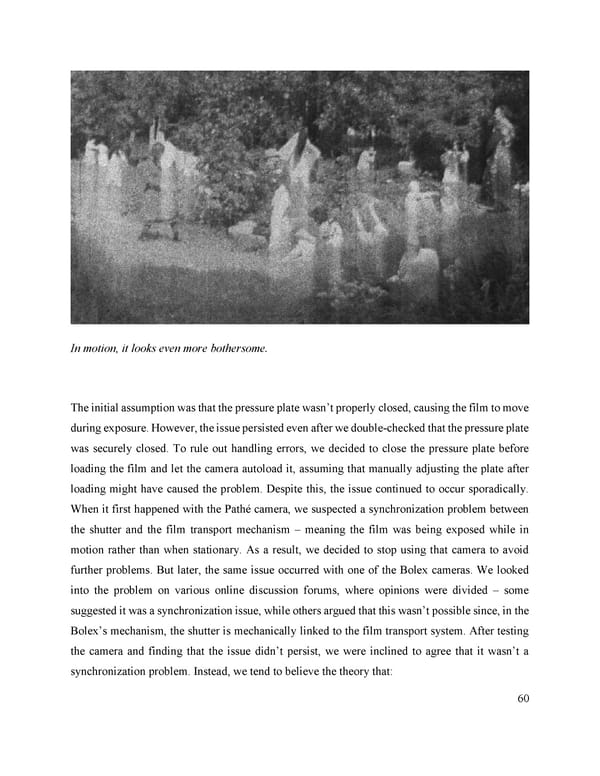In motion, it looks even more bothersome. The initial assumption was that the pressure plate wasn’t properly closed, causing the film to move during exposure. However, the issue persisted even after we double-checked that the pressure plate was securely closed. To rule out handling errors, we decided to close the pressure plate before loading the film and let the camera autoload it, assuming that manually adjusting the plate after loading might have caused the problem. Despite this, the issue continued to occur sporadically. When it first happened with the Pathé camera, we suspected a synchronization problem between the shutter and the film transport mechanism – meaning the film was being exposed while in motion rather than when stationary. As a result, we decided to stop using that camera to avoid further problems. But later, the same issue occurred with one of the Bolex cameras. We looked into the problem on various online discussion forums, where opinions were divided – some suggested it was a synchronization issue, while others argued that this wasn’t possible since, in the Bolex’s mechanism, the shutter is mechanically linked to the film transport system. After testing the camera and finding that the issue didn’t persist, we were inclined to agree that it wasn’t a synchronization problem. Instead, we tend to believe the theory that: 60
 Lost Analogue: Exploring Film, Music, and Interdisciplinary Methods in Education Page 60 Page 62
Lost Analogue: Exploring Film, Music, and Interdisciplinary Methods in Education Page 60 Page 62